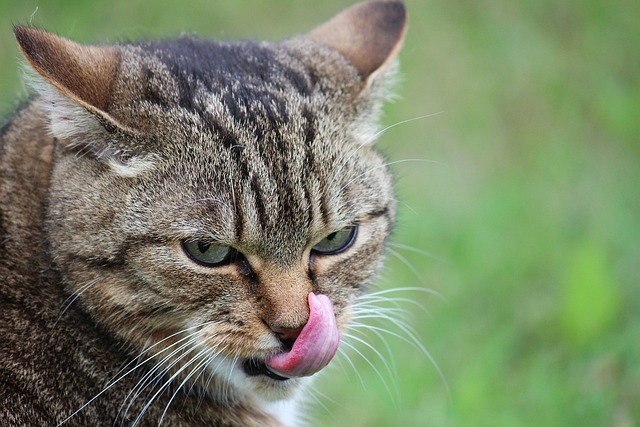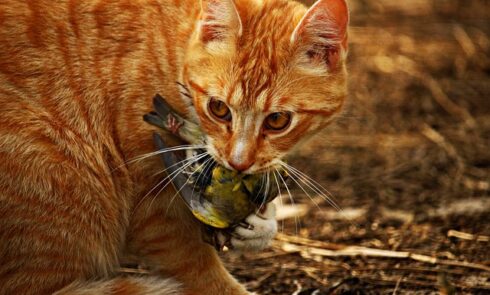Upon pondering the notion of granting cats their inaugural outdoor experience post-relocation, it becomes a matter of urgency to grasp the intricacy enveloped in our feline friends’ adaptation regimen. Cats, as territorial beings, form potent bonds with their customary surroundings. An abrupt alteration in habitat can evoke considerable stress and anxiety within your fluffy comrades – unfamiliar aromas and noises associated with new environs are often culprits. Noteworthy is that each cat possesses its unique temperament; consequently, the duration for acclimatization can fluctuate notably, spanning from mere days to extended weeks.
To smoothen this transition phase further necessitates cat guardians embody boundless patience and empathy. When introducing cats to an outside world for the first time following relocation, initiate by offering them a secure indoor haven for preliminary exploration—this initial stint of domestic adjustment aids considerably in curbing feelings of inundation as familiarization with novel reverberations and smells inside the new residence commences. As your whiskered companion incrementally ventures into unchartered territory through such exploratory endeavours they will establish fresh markers – visual cues augmented by scent-based signals – progressively deeming their fresh milieu potentially safe.
Preparing Your Cat for a New Environment
The puzzle of transitioning our feline friends to a new environment can be filled with perplexity. The question that often sends owners into the throes of confusion is – when is it appropriate to let my cat explore the outdoors after relocating? As one might expect, the answer tends to hinge on intricate factors such as your pet’s unique personality traits, the characteristics of the fresh surroundings and how effective you are at facilitating their seamless adjustment.
A burst of pre-emptive preparation should commence even before embarking on this relocation journey. This primarily involves honing your cat’s ability to return when called – essentially enhancing its recall response. An untimely introduction to an alien outdoor territory could lead your furry friend astray or worse still provoke them into bolting away in fear.
Conventional wisdom dictates retaining your cat within the safe confines of their new indoor space for about two or three weeks post-relocation. This creates sufficient time for them to adapt and become comfortable within these unfamiliar walls before daringly stepping paw onto uncharted turf outside. Over time, their sense of comfort and security anchored indoors will organically extend beyond those four walls into their outdoor domain.
Evaluating Outdoor Risks in the New Neighborhood
In the throes of transplanting a pet, particularly our feline companions, it’s paramount to evaluate the lurking perils in their unfamiliar environment. Embark on deciphering the indigenous fauna first. Seek out and make oneself aware of any threatening wildlife that could jeopardize your cat’s well-being – creatures like coyotes or raccoons spring to mind; familiarize yourself with their hours of activity.
Surveying the topography is equally vital – acclimatize yourself with any land characteristics or flora that may be hazardous. Poisonous botanical species, unenclosed water bodies, towering walls or precipices – all these factors can pose an imminent threat to an oblivious feline.
Furthermore, scrutinizing human elements—bustling thoroughfares or quarrelsome locals can swiftly transform a tranquil neighborhood into a perilous locale for your furry companion. Also cast an eye over whether there are vagabond cats roaming freely about. The presence of such could potentially breed aggression towards an incoming member invading their territory.
By conducting this detailed reconnaissance mission you’ll effectively delineate boundaries where dangers lurk for your whiskered friend ensuring creation of safe play zones within which they can explore freely.
Gradual Familiarization: The Importance of Patience

The initiation of your feline friend into uncharted territories is an endeavor that demands meticulous arrangement and ample forbearance. The widespread illusion that creatures can swiftly adjust to fresh environments is indeed a misunderstood notion. Specifically, our cat comrades necessitate duration for establishing security and familiarity within the depths of unfamiliar terrain. This period of acclimatization may appear tortuously lethargic, possibly extending over days or even weeks. Regardless, this phase of progressive familiarization stands as the cornerstone to your pet’s sustained comfort and joy.
In order to hasten this transition while avoiding unnecessary strain, it’s prudent to initially confine exploration within a singular room’s boundaries. Permit your cat time to thoroughly acquaint themselves with these confines before progressively unveiling additional chambers. Throughout this span, uphold a steady daily rhythm serving as an anchor providing solace and certainty. It bears significant weight ensuring their feeding zones, sleeping quarters, and waste disposal areas remain unchanged during this time frame. Henceforth with patience tactfully employed and ceaseless support at hand; your feline companion will deftly master the art of maneuvering through their novel environment.
Using Safe Spaces: Balconies and Enclosed Gardens
In the quest to craft a secure expanse for your feline companion’s exploration, one can effectively mitigate potential perils and mishaps. Deploying spaces such as verandas or enclosed greenspaces could prove to be an ingenious strategy in offering your cat a sampling of the outdoor world. This is done while simultaneously maintaining their existence within bounded, regimented terrain. These zones bestow upon cats the gift of fresh breezes, tactile sensations and novel stimuli mirroring that sensation akin to being in nature’s lap but with the safety net of indoor confines.
When it comes to tailoring these areas, it becomes paramount to exercise certain cautionary measures. For instance, balcony barriers ought to be shielded or enveloped by nets so as to eliminate any chance of your cat slipping through crevices or leaping over them. In line with this thought process are walled gardens which should ideally flaunt lofty partitions equipped with deterrents against climbing escapades that daredevils may attempt. An additional critical aspect is ensuring said gardens do not house any poisonous flora posing health hazards for our furry friends.
Through enforcing these steps we allow our whiskered companions unfettered joy under open skies and views while guaranteeing their well-being and imparting peace of mind for concerned pet parents.
Training Your Cat to Return Home
The journey of transforming your feline friend into an obedient companion is a labyrinthine task, cloaked in the shrouds of patience, time, and unfaltering positive reinforcement. Yet beneath this daunting facade lies an attainable goal; teaching your four-legged confidant to heed the call home with strategic precision.
Imagine embarking on this path within the confines of a controlled setting devoid of outdoor distractions. Visualize employing tantalizing treats or irresistibly fragrant catnip as potent motivators. Guide your whiskered companion towards reacting to a unique auditory signal – perhaps the gentle jingle of a bell or a distinct whistle tone resonating through space. This sound metamorphoses into your ‘Return Home’ commandment – an invaluable tool for ensuring secure escapades beyond safe boundaries.
This technique necessitates repeated rehearsals until its echoes become ingrained in your cat’s mind as synonymous with homeward journeys. Transform it into an experience worth cherishing by showering them with their treasured treats or indulging them in additional petting sessions that they so adore.
Such methods are not merely about forging reliable responses but also cementing bonds founded on trust between you and your pet – bonds which enhance their propensity to heed commands unequivocally. Embedding such trust is crucial for it nurtures within our feline friends, an innate willingness to obey these verbal cues.
Ways to Monitor Your Cats’ Outdoor Adventures
The curiosity for open-air escapades amongst our purring pals has been corresponded with novel technological leaps, designed to aid pet guardians in keeping tabs on their cherished feline companions. With the advent of GPS pet trackers, it’s now possible to establish a secure perimeter for your cat and receive instant alerts on your mobile device if they decide to venture beyond their defined bounds. This progressive technology renders real-time tracking, enabling you to monitor your cat’s outdoor peregrinations and speedily locate them should they wander too far from the safety of home. It’s an unerring instrument that bestows peace of mind by guaranteeing paramount security for your audacious feline.
In tandem with GPS trackers, ponder about setting up a dedicated cat cam – an apparatus specifically tailored towards surveilling your cat’s external activities. Equipped with video recording capabilities and image capturing features, this remote monitoring system allows you a bird’s eye view into your furry friend’s meanderings across your property; provides glimpses into their hunting prowess or play strategies; or simply lets you appreciate the vistas they uncover during their explorations. Some advanced models even boast night vision abilities – ensuring uninterrupted surveillance of your nocturnal companion’s movements in crystal clarity regardless of the hour. These cutting-edge contraptions play an instrumental role in cultivating a safe haven outdoors for our cats – allowing us observational pleasure while delivering indispensable protection provisions.
FAQ
To decipher the enigma that is your cat’s acclimation process, vigilant observation of their behavior is key. Pay heed to any manifestations of distress or apprehension, and endeavor to gently habituate your furry companion to their new surroundings.
The method lies in delicately introducing them into this uncharted territory, beginning with brief supervised excursions. Furthermore, offering them a familiar object from home can serve as an anchor amidst the unfamiliarity, heightening their comfort levels.
Outdoor perils may encompass elements such as vehicular traffic, predatory animals lurking around corners, plants bearing harmful properties and susceptibility towards disease or parasites. It’s crucial for you to conduct a comprehensive audit of your locality and acquaint yourself with potential threats prior to allowing your cat free rein outside.
Gradual acclimatization holds significance because it bestows upon your cat a sense of security whilst mitigating feelings of being overwhelmed. This gradual strategy enables them to leisurely adjust themselves towards the unique sensory experiences offered by nature—its varied smells, sounds and visual stimulus.
Balconies along with enclosed gardens can prove ideal sanctuaries for enabling your pet’s exploration safely within outdoor confines. Ascertain these zones are devoid of risks while enriching these spaces using intriguing additions like plants preferred by cats can entice further curiosity.
Ensuring your feline friend’s return can be accomplished by instituting a routine, using food as a lure and through recall training exercises. An additional safety measure would be having them wear an identification collar in case they stray too far from home.
There exist multiple methods for supervising your cat’s adventures outside the house—from technology such as GPS trackers or feline cameras, regular visual checks or setting up check-in schedules. For enhanced security though, it is recommended that one supervise as much of their outdoor time as feasibly possible.


